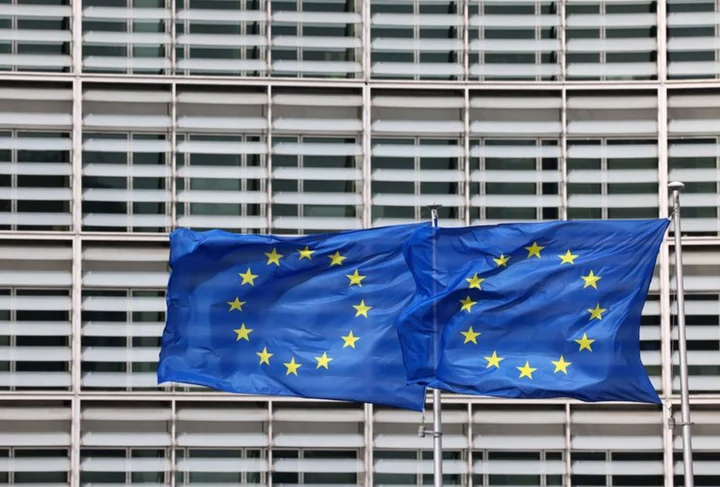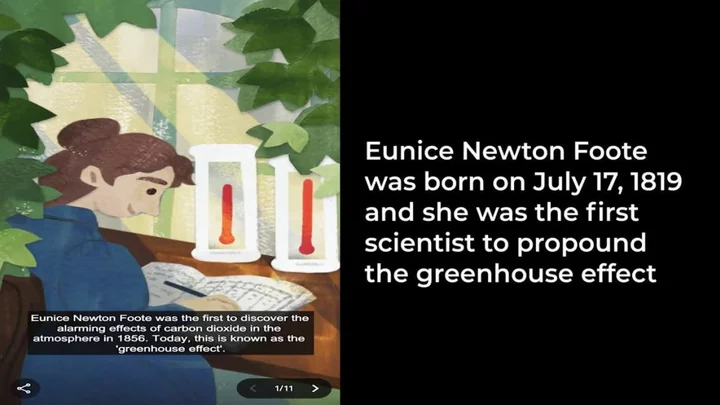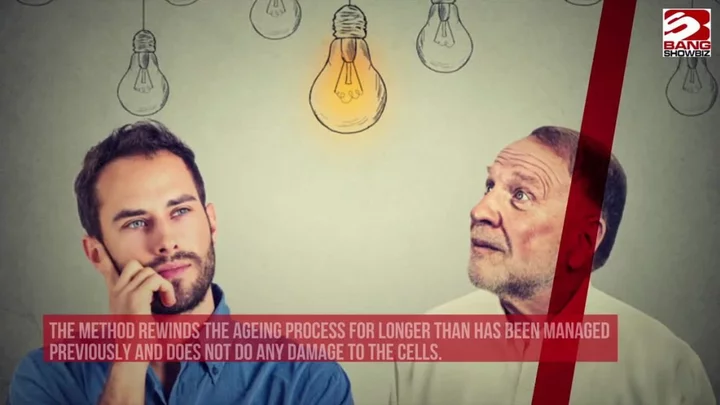
EU Commission sticks to US economist pick for senior antitrust job
By Foo Yun Chee BRUSSELS The European Commission stuck to its guns on Friday, saying it was not
2023-07-17 18:47

Apple’s next iPhone may include new battery technology, report suggests
Apple’s upcoming iPhone 15 may feature a new stacked battery design that is commonly used in electric vehicles, a new report has suggested. The new handset models expected to be launched in September may have their battery components stacked on top of each other, according to a seasoned leaker who goes by the username RGcloudS on Twitter. This design may lead to battery components being more tightly packaged, likely offering a higher energy density for the new iPhones. An earlier report from ITHome had suggested that these next-gen iPhones could feature as much as a 15 per cent boost to battery life. Many experts said battery packs are one area where there is an opportunity for Apple to explore more innovation. While cameras and display screens have gotten better over the years, there have only been marginal improvements in battery life across models. The development currently seen in the existing iPhone 14 battery life is also not as significant as that seen with the previous model iPhone 13. The leaker, however, pointed out that the new battery technology design for iPhone 15 remains “limited”, indicating that it may not be fully implemented as the handsets roll out for the public. There have been a number of rumours so far regarding design upgrades for the iPhone 15. Some leakers claim the new iPhone could ditch the lightning port in favour of USB-C for the first time and that Apple might remove the mechanical volume and power buttons on its handsets and replace them with solid-state ones. Rumours also suggest the iPhone 15 could feature a new chip to support Apple’s upcoming Vision Pro VR headset and allow the phone to work as part of a “more competitive ecosystem”, leaker Ming-Chi Kuo had said. This latest rumour comes on top of several other features Apple announced for its upcoming iPhone at its Worldwide Developer’s Conference last month. At the conference, the tech giant said iPhone 15 upgrades would include a range of new tools from one for journalling and AirDrop updates to live transcription in voicemail and a new standby mode to turns the iPhone into a smart display. Read More iOS 17: Apple launches beta of iPhone software update, allowing people to download new OS early Nothing Phone (2) review: A weird and wonderful mid-range Android Apple launches ‘Tap to Pay on iPhone’, letting people take payments on their device iPhone 13 pre-order: UK contract deals from Vodafone, EE, O2 and more iPhone 13 - live: UK contract deals and prices for Apple, EE and O2 Apple reveals its ‘most professional handset ever’, iPhone 13 Pro
2023-07-17 17:46

Norway regulator to fine Meta over privacy breaches
OSLO Facebook and Instagram owner Meta Platforms will be fined one million crowns ($100,000) per day over privacy
2023-07-17 16:53

Who is Eunice Newton Foote? The scientist celebrated in today's Google Doodle
We talk about climate change and the devastating effects of greenhouse gases on a daily basis, yet many of us have never heard of Eunice Newton Foote. The American scientist was the first person to realise the alarming impact of carbon dioxide in the atmosphere, all the way back in 1856. So, to mark what would have been her 204th birthday, Google has dedicated today’s Doodle to the environmental pioneer. Head to the search engine and you’ll find an 11-part slideshow explaining Foote’s most significant work. Sign up for our free Indy100 weekly newsletter It goes on to point out that her research was largely ignored for almost 100 years, and credits her with being the first person to “plant a seed of interest in the issue of climate change”. And for anyone wondering, her surname is no coincidence: her father was allegedly a distant relative of Sir Isaac Newton. In a blurb to its Doodle, Google points out that whilst science was Foote’s lifelong passion, she also dedicated time to campaigning for women’s rights. In 1848, she attended the first Woman’s Rights Convention in Seneca Falls, New York State and became the fifth signatory of the Declaration of Sentiments — which demanded equality for women in social and legal status. Back then, women were largely shunned from the scientific community, but this didn’t stop Foote from conducting experiments on her own. After placing mercury thermometers in glass cylinders, she noticed that the cylinder containing carbon dioxide heated up the most and took the longest to cool down. As a result, she became the first scientist to draw a connection between rising CO2 levels and the warming of the atmosphere. After publishing her findings, Foote wrote a second paper on atmospheric static electricity for the journal ‘Proceedings of the American Association for the Advancement of Science’. These were the first two physics studies to be published by a woman in the US, as Google notes. In 1856, a male scientist presented her work at the annual meeting of the American Association for the Advancement of Science. This then lead to further experiments which uncovered what is now known as the Greenhouse effect. And whilst none of us relish the fact this phenomenon exists, we should be eternally grateful to Foote for flagging it to us, all those years ago. Have your say in our news democracy. Click the upvote icon at the top of the page to help raise this article through the indy100 rankings.
2023-07-17 15:48

Laid-off Twitter Africa team 'ghosted' without severance pay or benefits, former employees say
Former employees of Twitter Africa who were laid off as part of a global cost-cutting measure after Elon Musk's acquisition have not received any severance pay more than seven months since leaving the company, several sources told CNN.
2023-07-17 13:54

DMs may come to Threads soon as Meta’s app now has one-fifth of Twitter’s user base
Direct messaging is reportedly coming to Threads soon as the Twitter rival app’s user base grows to nearly one-tenth of the Elon Musk-owned platform. A leaked internal report from Meta suggests DMs will be “coming soon” to Instagram’s Threads, along with other exciting features, Business Insider reported. Initially, Instagram’s chief Adam Mosseri had said DMs are not in Threads’ immediate roadmap, but the new leaked memo suggests the Twitter competitor could offer the messaging feature much sooner than expected. This expected update to the platform comes as Threads now has over 100 million user sign ups just within days of its arrival, boasting a weekly active user base that is nearly one-fifth of competitor Twitter’s. Within just its first week of launch, Threads racked up about 93 million active users globally and on 10 July, Meta announced that the app had reached 100 million signups. The app now has more than 150 million downloads, reaching this milestone “5.5 times more quickly than the second-fastest app to do so”, according to the app intelligence firm data.ai. Niantic’s Pokémon GO held the top spot as the most rapidly downloaded app for years since its debut in July 2016. Among Threads’ userbase, data.ai’s report suggested India accounts for nearly a third of the app’s downloads, followed by Brazil, with 22 per cent of overall Threads’ installs, and the US representing about 16 per cent of the total. Now, with the anticipated inclusion of a direct messaging feature, people on Threads can stay longer and chat privately without having to leave the app. Other features such as improved search, trends and topics are also reportedly coming soon, along with a feed in chronological order. It is unclear when these new updates will come. The new changes could put more pressure on Twitter and its owner Elon Musk, who said the platform continues to lose cash as advertising has dropped by half. “We’re still negative cash flow, due to (about a) 50 per cent drop in advertising revenue plus heavy debt load,” Mr Musk tweeted on Saturday. “Need to reach positive cash flow before we have the luxury of anything else,” he said. Read More $44 billion and eight months later. It’s finally all over for Elon Musk Twitter changed my life – I’ll never forgive Elon Musk for what he’s done to it Twitter is in negative cash flow due to 50% drop in advertising revenue, says Elon Musk Twitter in negative cash flow due to 50% drop in advertising revenue, says Elon Musk Twitter starts making payments to its most controversial users Elon Musk posts series of explicit tweets about Mark Zuckerberg
2023-07-17 12:27

Scientists say drinking coffee gives ‘special boost’ to the brain
If you’re anything like us, the first coffee of the day is the only thing that can get us up on a morning – and it turns out, there’s real science behind it. Everyone knows that coffee can give us a welcome caffeine hit, but it’s now been revealed that the drink also gives us an extra ‘special boost’ too. Scientists have claimed that the act of drinking a cup of joe gives the body a lift, making us more alert, which can’t be replicated merely with caffeine. In fact, new research shows that drinking hot coffee activates additional areas of the brain. Sign up to our free Indy100 weekly newsletter Scientists from the University of Minho in Portugal and elsewhere looked into the effects of coffee outside of just caffeine content as part of a study – and they found that plain caffeine didn’t have the same impact. In fact, a cup of coffee also influenced working memory and goal-directed behaviour. “There is a common expectation that coffee increases alertness and psychomotor functioning. When you get to understand better the mechanisms underlying a biological phenomenon, you open pathways for exploring the factors that may modulate it and even the potential benefits of that mechanism,” study co-author Nuno Sousa explained. Experts said that drinking coffee actually increased the connectivity in the brain’s more advanced nerve network controlling vision, and other parts involved in working memory, cognitive control and goal-directed behaviour – something not found when participants only took caffeine. Researchers also said that if subjects wanted to not just feel alert but ready to go, caffeine alone might not do the job. “Acute coffee consumption decreased the functional connectivity between brain regions of the default mode network, a network that is associated with self-referential processes when participants are at rest,” study co-author Maria Picó-Pérez said. “The subjects were more ready for action and alert to external stimuli after having coffee,” she added. Have your say in our news democracy. Click the upvote icon at the top of the page to help raise this article through the indy100 rankings.
2023-07-17 00:00

Call of Duty to remain on Playstation following Activision Blizzard Microsoft merger
Microsoft has signed an agreement with Sony to ensure "Call of Duty" remains available on PlayStation after Microsoft closes its $69 billion Activision Blizzard merger, the tech giant said Sunday.
2023-07-16 23:15

The reason why people really did look older in the past
Back in the day, it’s said that people looked a lot older earlier in life than they do now. As it turns out, there’s a few reasons why. A video essay exploring the phenomenon from Vsauce posits a few explanations why we notice people looking older at a younger age in old footage and photographs. For one, the improvements in standards of living and advancements in healthcare over the years offer an obvious factor. There’s also subconscious bias surrounding fashions from years gone by and their connection with older generations. Sign up to our free Indy100 weekly newsletter However, a study from 2018 also explored how biological ageing has changed in a short space of time. Did People Used To Look Older? www.youtube.com It found that human beings are actually biologically “younger” now than ever when it comes to changes in things like blood pressure – so there’s an actual physical difference between the generations that explains why people looked older sooner back in the day. The study explained that this is down to factors such as a fall in smoking, reading: "Over the past 20 years, the biological age of the U.S. population seems to have decreased for males and females across the age range. "However, the degree of change has not been the same for men and women or by age. Our results showed that young males experienced greater improvements than young females. This finding may explain why early adult mortality has decreased more for males than females, contributing to a narrowing of the gender mortality gap. Additionally, improvements were also larger for older adults than they were for younger adults." Have your say in our news democracy. Click the upvote icon at the top of the page to help raise this article through the indy100 rankings.
2023-07-16 19:57

'Alien' suddenly transforms into a totally different creature in jaw-dropping underwater footage
If ever anyone needs proof that aliens exist, they need only turn to the bottom of the sea. No, we’re not talking about fragments of interstellar meteors or spacecraft, we’re not even talking about mysterious mermaids, we’re talking about the extraordinary creatures that lurk in the depths of our oceans. One of these incredible beasts has been captured on film, swimming more than 3,700ft (1,128m) below the surface of the Indian Ocean. What makes this “alien” so special is not just the fact it’s able to live so far beneath the waves, but the fact it can transform its appearance entirely in just the blink of an eye. Sign up for our free Indy100 weekly newsletter The jaw-dropping metamorphosis was recorded thanks to a remotely operated vehicle (ROV), which was exploring the sea off the East coast of Africa. In the clip, the creature – which looks more like a strange logo than a living being – can be seen floating serenely in the water. Then suddenly, 40 seconds into the video, it seems to shrink into a small black dot. On closer inspection, it’s clear that this isn’t a black dot but a jet-black jelly, decked out with streams of pulsating, technicoloured lights. The video was posted to YouTube by the user CaptainJRD back in 2013. In a caption, he explained that it was taken “at a depth of 3753 ft in the Indian Ocean within close proximity to a drill wellhead. “Near the end of the footage you can see the creature getting caught up in the output from the ROV thrusters. The video has not been altered,” he added. Alien looking creature transforming near Ocean floor at over 3700 feet.Video from ROV www.youtube.com The recording has been watched more than 5.8 million times, with viewers agreeing that it was the most “alien-looking creature” they’d ever seen. “If this isn’t one of the coolest things ever, I’m not sure what is,” one wrote. “Is no one gonna talk about how it looked like a disco ball after it transformed? This is an amazing discovery,” commented another. “This is why I never go more than 1000 ft underwater when I go to the beach,” joked a third. And a fourth added: “I’m a strong believer that everything deep deep down in the ocean looks like an alien. I also bet that there’s a lot of crazy species we’ve never seen before, hell I wouldn’t be that surprised if a 900 million-year-old dinosaur dwells at the bottom of the ocean.” Meanwhile, other commentators were quick to identify the creature, with most agreeing that it was a unique form of comb jelly. “For those wondering, this is a Bloodbelly Comb Jelly also called Lampocteis. Really beautiful creatures,” one wrote. Viewers also shared their dismay at what became of the stunning beast. Watch till the end of the video and you’ll see that no sooner does it execute its glorious transformation than it is brutally torn apart, apparently by a valve on the wellhead. “I became absolutely mesmerized. It was one of the most beautiful creatures I've ever seen, and then it suddenly just got ripped apart,” one commented. Hailing it as a “powerful video” another lamented: “The camera catches the most amazing, beautiful creature never seen before, just to see it torn to shreds by the oil blowout valve. “So very sad and also fitting for what we do to nature every second, everywhere on Earth.” Have your say in our news democracy. Click the upvote icon at the top of the page to help raise this article through the indy100 rankings.
2023-07-16 17:27

How one lake has captured the moment we changed the world forever
The floor of Crawford Lake in Ontario acts like a storybook, preserving Earth’s recent history in chronological order. Crawford Lake reveals the activities of local Iroquoian communities from the late 13th to 15th centuries, all the way through to the present day. This is because Crawford Lake is a meromictic lake, meaning that the dense bottom layer of water does not mix with the less dense upper layers. “The isolated bottom layer of water remains under disturbed, enabling the accumulation of clearly laminated valves which record precise information about the time during which they were deposited,” according to the Anthropocene Working Group. Experts have nominated Crawford Lake as representation for the start of the Anthropocene epoch, a proposed new geological era characterised by significant changes to the planet’s surface as a result of human behaviour. The Anthropocene is yet to be officially accepted as a unit of geologic time, but in 2016 a working group under the guidance of an International Commission on Stratigraphy subcommittee agreed that human behaviour has left scars so deep that they will remain evident even into the distant future. Sign up to our free Indy100 weekly newsletter One of the most notable markers of the Anthropocene is the appearance of plutonium, a radioactive material that appeared in the mid-20th century as a result of hydrogen bomb tests. “The presence of plutonium gives us a stark indicator of when humanity became such a dominant force that it could leave a unique global ‘fingerprint’ on our planet,” explained Professor Andrew Cundy, Chair in Environmental Radiochemistry at the University of Southampton and member of the Anthropocene Working Group. “In nature, plutonium is only present in trace amounts. But in the early-1950s, when the first hydrogen bomb tests took place, we see an unprecedented increase and then spike in the levels of plutonium in core samples from around the world. We then see a decline in plutonium from the mid-1960s onwards when the Nuclear Test-Ban Treaty came into effect.” Agreeing on a simple measure that defines the boundary between chapters in Earth’s history is just the first step. This measure requires agreement among scientists on a single location to define the boundaries. Known as the Global Boundary Stratotype Section and Point, or a golden spike, plays a crucial role in standardising these borders between epochs. The Anthropocene Working Group has been evaluating potential golden spike sites, from Oued Akrech, Morocco, to Alano di Piave, Italy. After spending three years assessing the qualities of a dozen potential golden spikes for the Anthropocene, finally the AGW has landed on Crawford Lake. “Crawford Lake is so special because it allows us to see at annual resolution the changes in Earth history throughout two separate periods of human impact on this small lake,” micropalaeontologist Francine McCarthy of Brock University in Canada, a voting member of the AGW, said at a press briefing. The lake’s unique properties, such as its small size, depth, and lack of water mixing create sediments that precisely record environmental changes over the past millennia. To officially establish the Anthropocene in the International Chronostratigraphic Chart, the golden spike at Crawford Lake must undergo a series of voting by various commissions and unions. If successful, it will mark the moment when human activities permanently altered the planet. Have your say in our news democracy. Click the upvote icon at the top of the page to help raise this article through the indy100 rankings.
2023-07-16 17:16

Twitter is in negative cash flow due to 50% drop in advertising revenue, says Elon Musk
Elon Musk says Twitter is still losing cash because advertising has dropped by half. In a reply to a tweet offering business advice, Mr Musk tweeted Saturday: “We’re still negative cash flow, due to (about a) 50 per cent drop in advertising revenue plus heavy debt load.” “Need to reach positive cash flow before we have the luxury of anything else,” he concluded. Ever since he took over Twitter in a $44bn deal last fall, Mr Musk has tried to reassure advertisers who were concerned about the ouster of top executives, widespread layoffs and a different approach to content moderation. Some high-profile users who had been banned were allowed back on the site. In April, Mr Musk said most of the advertisers who left had returned and that the company might become cash-flow positive in the second quarter. In May, he hired a new CEO, Linda Yaccarino, an NBCUniversal executive with deep ties to the advertising industry. But since then, Twitter has upset some users by imposing new limits on how many tweets they can view in a day, and some users complained that they were locked out of the site. Mr Musk said the restrictions were needed to prevent unauthorized scraping of potentially valuable data. Twitter got a new competitor this month when Facebook owner Meta launched a text-focused app, Threads, and gained tens of millions of sign-ups in a few days. Twitter responded by threatening legal action. Read More Elon Musk doppelganger fights fake Mark Zuckerberg in preview of cage match Twitter starts making payments to its controversial users, including $20k to Andrew Tate Threads: Elon Musk posts series of explicit tweets about Mark Zuckerberg
2023-07-16 11:19
